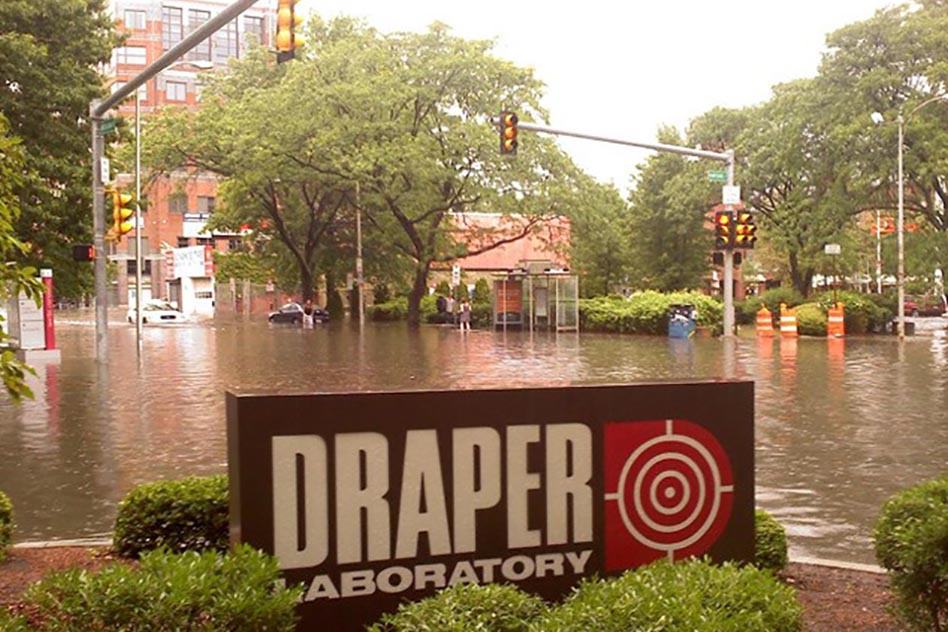Featured Stories, Joint Program on the Science and Policy of Global Change, MIT, MIT EAPS, News | January 25, 2018
Flood Risk Under an Uncertain Future Climate
Joint Program researcher assesses the threat and how Cambridge can prepare

By Mark Dwortzan | MIT Joint Program on the Science and Policy of Global Change
Hunkered down at 11 tables at Harvard Law School on January 17, more than 100 business, sustainability and emergency-management professionals spent three hours simulating how they might coordinate a response in the aftermath of a major hurricane in the City of Cambridge. In two sessions—one focused on immediate recovery and continuity actions one day after landfall, the other on ongoing efforts 1-1.5 weeks after landfall—they brainstormed ideas on how best to prioritize and share food, housing, energy and other resources with multiple Cambridge stakeholders under such circumstances, all while maintaining essential business operations.
Organized by the Cambridge Compact for a Sustainable Future and designed by sustainability and emergency management specialists from MIT, Novartis, Harvard, the City of Cambridge, and the Cambridge Fire Department, this “Climate Resiliency Tabletop Exercise” focused primarily on best practices for business continuity and coordination in response to a major flooding event. But attendees also learned about the underlying science of climate change and its likely impact on the frequency and intensity of major flooding events in Cambridge throughout the 21st century.
Providing that perspective was Kenneth Strzepek, a senior research scientist at the MIT Joint Program, faculty fellow at the MIT Office of Sustainability, and climate resiliency expert at the World Bank. Strzepek wrapped up the event with a presentation that highlighted the critical value of emerging flood risk science in helping stakeholders prepare for scenarios discussed in the tabletop exercise.
He began his talk, “Flood risk under an uncertain future climate,” with a disclaimer: there’s a lot of uncertainty about where the global and regional climate are heading and their potential impact on the severity of flooding events that may occur in Cambridge in the coming decades. One aspect of this uncertainty is in today’s climate models, which vary widely in terms of their projections of the climate’s response to increasing greenhouse gas concentrations in the atmosphere. Another source of the uncertainty is that climate and weather-based flood-producing mechanisms operate at a range of scales in time and space.
“The type of threat that we’re seeing depends on the scale,” he said. “If you’re a community, you’re worried about flash floods; if you’re the Massachusetts Department of Transportation, you’re worried about the Charles River basin.”
Strzepek noted that the greatest risk of severe flooding would come from extended tropical storm rainfall over the Charles River coupled with storm surge from the Atlantic Ocean. Another key threat would come from flash floods, which are expected to get much worse over the course of the century. A tropical storm model developed by MIT Professor of Atmospheric Science Kerry Emanuel shows a growing risk of hurricanes in Boston amid rising atmospheric greenhouse gas emission concentrations. The model projects that the risk of extreme flooding in Boston is likely to increase significantly by 2070.
Strzepek provided several examples of how homeowners and municipalities are adapting to this heightened risk, from building houses on stilts to placing critical infrastructure on upper floors.
“If your infrastructure is long-lived, you have to think about climate change,” he said. “If it’s short, you need to just monitor it, and the key that we talk about in our developing-country work is flexible design, the ability to change it as we learn what the climate is doing.”



